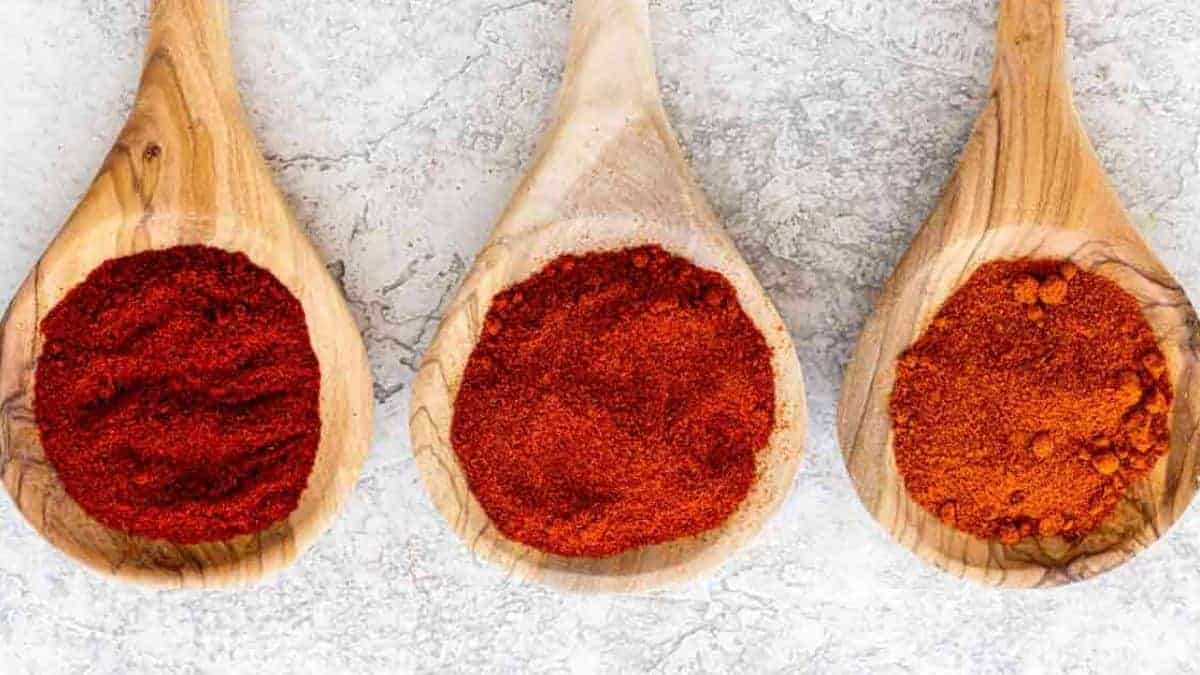Description
Paprika spice comes from a mild red pepper that is dried and ground to create a vibrant colored powder. The spice varies in color from brown, orange, and red and in flavor which includes sweet, hot, and smoked variations.
What does paprika taste like?
In general, the paprika spice is subtly earthy with a sweet and peppery taste. flavors vary regionally ranging in pungency and heat, from sweet, bittersweet, and spicy depending on the peppers. Smoked variations are also popular providing further depth and body. Hungarian and Balkan paprika tends to be the hottest, while Spanish, Portuguese, and Moroccan paprika are slightly milder, and American paprika being the mildest. Aromas are characteristically of smoke, caramel, and spice.
Paprika Spice Uses
Paprika spice is most commonly used as a seasoning within sauces, marinades, dry rubs, stews, and soups. In home kitchens, a pinch of paprika is a welcome addition to many dishes, providing a hint of smoke or spice effortlessly, especially to chicken dishes. In the United States, the delicate red powder is also popularly used as a garnish to provide a burst of red in dishes such as deviled eggs or to garnish the plate.
To release the full flavor of paprika spice it should be heated and added near the end of cooking, as only light cooking is needed to release its vibrant flavor and coloring. Excessive heat will reduce the spices profile and due it’s high sugar content paprika burns easily, quickly becoming bitter. The spice is versatile in its uses, one teaspoon can add depth to a dish whilst a tablespoon could make it the star. Additional uses include the adoption in India as a natural form of red food coloring. It’s also one of the most popular Mexican spices found in many delicious dishes.
To make homemade, paprika start with alma paprika peppers, dry in a hot shaded area, or dehydrator to prevent mold. Once completely dry remove the seeds and stalks then place the peppers into a coffee grinder or food processor. Blitz until a fine powder to produce a sweet and lightly spiced paprika powder.
Paprika Substitutes
- Aleppo Pepper: smokey and complex with notes of fruit and mild heat. Aleppo chilies will mirror most of the paprika’s profile and work as the best substitute.
- Ancho Pepper: lightly smoked and hot, ancho chili powder will closely replicate paprika.
- Chili Powder: supplies similar color and spice but more intense heat than most paprikas so use sparingly.
- Cayenne: a less complex profile that will provide red colorant with a much higher spice level.
Compliments and Pairings
Cumin powder usually compliments paprika in cases of a chili dish. Sugar and allspice compliment paprika when they are used as a BBQ rub. Paprika pairs best with savory ingredients which complement the mild spice such as garlic, turmeric, caraway, allspice, cardamom, parsley, rosemary, oregano, saffron, pepper, thyme, chili, yogurt, sour cream, butter, oil, eggs, shellfish, cured meats, braises, rice, and cream sauces.
Expiration and Storage
- Ground: in powder form paprika should be stored in an air-tight container away from light for up to 3-4 years.
Where does paprika come from?
Paprika is derived from dried and ground red capsicum pepper native to Mexico. The name paprika is Hungarian referring to pepper, taking its roots for the Greek peperi and Latin piper. The cultivation of peppers was spread to Spain who originated pimenton, seeds then spread through the Ottoman Empire becoming of particular importance in Hungary.
Spain and Hungary are the main producers of paprika spice worldwide, spanish paprika, Pimenton de la Vera, is smoked over wood giving a distinct color and smoky flavor whilst Hungary produces six different variations generally sun-dried. Rose paprika from Hungary is considered to be the highest quality, made from specially selected dark red pods which are sweet in aroma and flavor, some forms of paprika spice also use the whole pepper whilst most remove the stems and seeds before grinding. For more scientific details visit wikipedia.
Fun Facts
- The national dishes of Spain and Hungary both use paprika as an essential ingredient.
- Christoper Columbus is credited with having brought peppers to Europe and therefore paprika.
- There is a Paprika Museum in Kalocsa, Hungary dedicated to the spice with information on the production and history of paprika.
Popular Recipes
- Chicken paprikash with spaetzle
- Hungarian goulash
- Paprika oven fries
- Romesco sauce
- Peri-peri sauce
- Chorizo
- Paprika roasted asparagus and greens
- Morrocan tagine
- Authentic rabbit paella
- Deviled eggs
- Beef stroganoff

